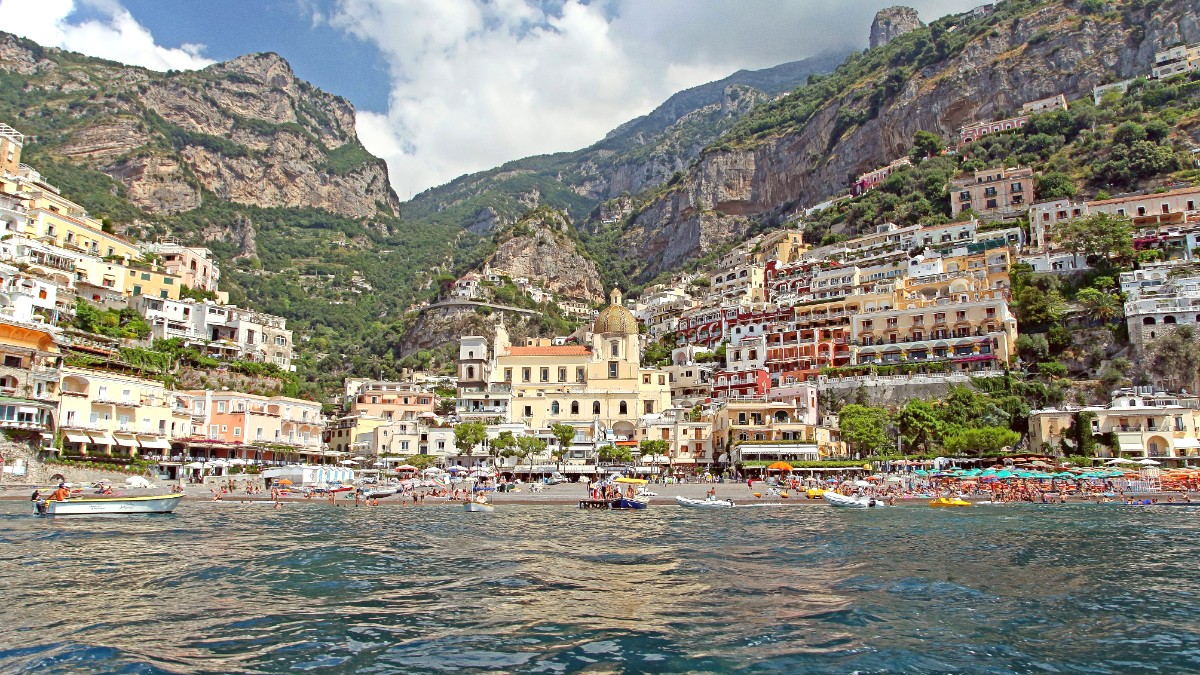
Campania, Italy
Temperatures typically range from 15-25°C (59-77°F). Precipitation is moderate, with occasional showers, especially in April. Humidity increases as spring progresses. The landscape is lush, with flowers blooming everywhere. This period brings pleasant temperatures for sightseeing and outdoor activities like hiking. Crowds are fewer compared to peak summer, making for a more relaxed experience. Most businesses are open, and prices are more reasonable.
Autumn (September-October): Temperatures are pleasant, ranging from 18-28°C (64-82°F). Precipitation increases, especially in late October, but many days remain sunny. Humidity decreases, making for comfortable exploring. Early spring or late autumn might bring cooler evenings, requiring light layers. Some ferry services or smaller establishments may operate on reduced schedules.
Summer (June-August): Peak season. Temperatures often range from 25-35°C (77-95°F), frequently exceeding 30°C (86°F). Rainfall is minimal, and humidity is high, especially in July and August. The sea is warm and inviting. Positano becomes extremely crowded, leading to long waits at restaurants, packed beaches, and significant traffic congestion on the coastal roads. Prices for accommodation and services reach their peak.
Winter (November-March): Temperatures are cooler, generally between 8-15°C (46-59°F). This period sees the highest precipitation, especially from December to February. Humidity is lower, and the air is crisp. Many businesses close for the season. Very few tourists visit during this time, offering a quiet, authentic local experience. Prices are at their lowest for accommodation.
(June-August)
Ideal beach weather, all services open.
Extreme crowds, highest prices, hot temperatures.
(April-May, Sep-Oct)
Pleasant temperatures, fewer crowds, reasonable prices.
Some services may have reduced schedules, October sees more rain.
(November-March)
Very quiet, authentic feel, lowest prices.
Many closures, minimal ferry services, rainy weather.
Hiking (e.g., Path of the Gods): April-May and September-October present comfortable temperatures, clear skies, and fewer crowds. Photography: Early morning or late afternoon in the shoulder seasons offer the best light and fewer crowds for capturing iconic shots.
Swimming & Beach Activities: June-September offers the warmest sea temperatures for swimming and sunbathing. Boat Tours: May-September is the best period for boat excursions, with full service availability and favorable weather conditions.
The Amalfi Coast does not experience monsoons or hurricanes.
Possible in July and August. Protect yourself from the sun, stay hydrated.
Specific to late autumn and winter, can lead to localized landslides.
Landslides may temporarily impact road access or cause closures.
Always follow local authority warnings during periods of heavy rain.
Italy is part of the Schengen Area, a zone of 27 European countries that have abolished passport and all other types of border control at their mutual borders. This means smooth travel between these nations once you enter the area.
Non-EU/EEA/Swiss citizens generally need a Schengen visa for stays up to 90 days within any 180-day period. This visa allows travel throughout the Schengen Area.
The European Travel Information and Authorisation System (ETIAS) is expected to be operational in mid-2025. Visa-exempt non-EU nationals will then need an ETIAS authorization.
Positano can be an expensive destination, specifically during high season. However, with careful planning, you can tailor your trip to various budgets.
Rely on public transportation (buses, ferries) instead of taxis. Eat at local trattorias or buy groceries for some meals. Travel in the shoulder season for better rates.
Italy has a modern healthcare system, and Positano is a generally safe place for visitors.
Ensure routine vaccinations are current (MMR, DTP, Polio, Varicella). Consult your doctor for personalized advice.
Sun is intense in summer. Use high SPF Mineral sunscreen, wear a Wide-brimmed hat and Sunglasses. Stay hydrated and plan strenuous activities for cooler times.
Wear comfortable, supportive Walking shoes due to extensive stairs. Pack Blister plasters.
Always carry a basic Travel first aid kit.
Tap water in Positano is safe to drink. Carry a Reusable water bottle. Food hygiene standards are high in Italy. Eat at busy, clean establishments.
Mosquitoes can be present during warmer months. Use Insect repellent.
Pack Band-aids, Ibuprofen, and Acetaminophen.
Easily identified by a green cross sign. Pharmacists offer advice for minor ailments and dispense medications.
Positano has seasonal clinics. For serious needs, major hospitals are in Castellammare di Stabia and Salerno.
EU/EEA/Swiss citizens should carry EHIC for state-provided healthcare access.
Positano is very safe with low crime rates. Be aware of minor risks:
Travel insurance is highly recommended. It should cover medical emergencies, evacuation, trip cancellation, and lost luggage.
Lifestraw products are available for personal water filtration needs.
Adventure Medical Kits provide robust first aid supplies.
Pacsafe offers anti-theft bags and travel security products.
Protect yourself from intense summer sun with high SPF sunscreen, a wide-brimmed hat, and sunglasses. Stay hydrated by drinking plenty of water; tap water in Positano is safe to drink. Carry a reusable water bottle.